

Metal detecting holidays in England with the World's most successful metal detecting club.
Twinned with Midwest Historical Research Society USA
|
Nov
2005 Latest Finds Page 4
|
|
|
|||
|
C 1500
BC Bronze age spear head 11.61g,
55.75mm L 10.43mm W
|
|||
 |
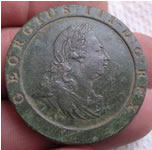 |
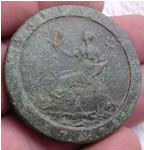 |
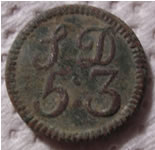 |
|
1stC
Roman bronze fibula brooch - Colchester type
|
1797
George III Cartwheel two pence
|
1760
- 5 shilling and 3 pence coin weight (1/4 gold guinea)
|
|
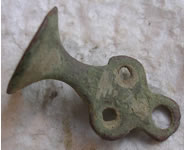 |
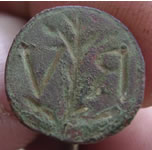 |
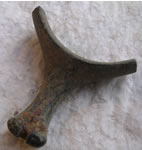 |
|
|
16thC Copper
alloy Seal matrix 'RV'
|
18thC spur
fitting
|
||
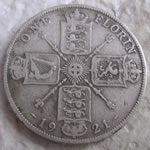 |
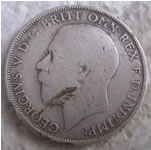 |
 |
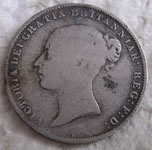 |
|
1921 George
V milled silver 2 shilling piece 'Florin' (24 pence)
|
1846 Queen
Victoria milled silver sixpence
|
||
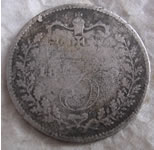 |
 |
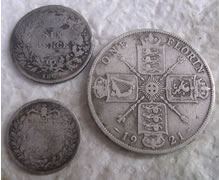 |
|
|
1859 Queen
Victoria milled silver sixpence
|
Milled silver
size comparison
|
||
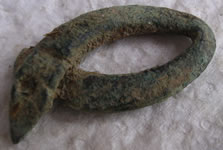 |
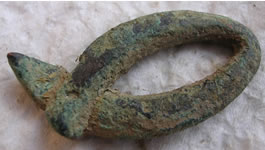 |
||
|
Tudor period snake belt fitting |
|||
 |
 |
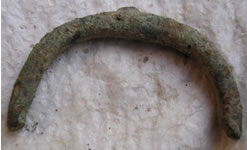 |
|
|
1422AD Henry
VI hammered silver groat ( 4 pence )
|
Roman period
prick spur
|
||
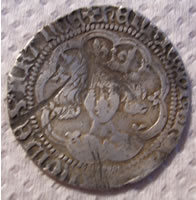 |
 |
||
|
1422-27 AD Henry VI hammered silver Groat ( 4 pence) - 3.59g, 25.29mm sent to Fitzmuseum for class ID |
|||
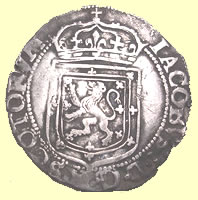 |
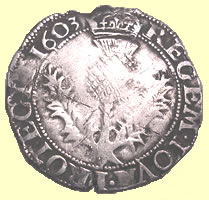 |
||
|
Huge, James 1st Scottish Merk sometimes known as the half thistle dollar and value of 13 shillings and 4 pence ( 160 pence) 6.56g, 31.40mm |
|||
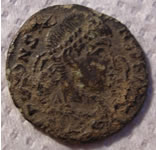 |
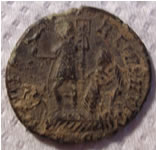 |
 |
 |
|
House of Constantine mid 4thC Roman bronze 4.23g, 22.13 'centenionalis
of Constans (337-350 A.D.). This one's reverse legend is FEL TEMP REPARATIO,
but instead of the more common soldier spearing the unfortunate cavalryman,
shows the emperor in the prow of a boat steered by Victory, and holding
a phoenix on a globe and a labarum (legionary standard with a Chi-Rho
Christogram on it) It appears, although the exergual mintmark is not
particularly clear, to be from the mint at Lugdunum (Lyons). This type
dates to about 348-349 A.D'. |
House
of Constantine mid 4thC Roman bronze sent to Mark at the URF for further
ID
|
||
 |
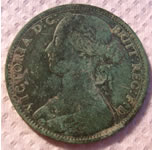 |
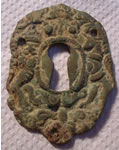 |
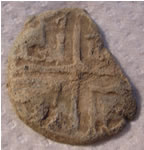 |
|
1863 Victorian
copper penny in great shape
|
Lion and
Unicorn Georgian lock plate
|
15thC lead
token - long cross design
|
|
 |
 |
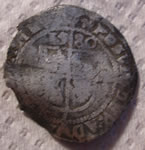 |
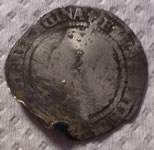 |
|
Post Medieval
belt mount
|
Unicorn design
livery button
|
1580 Elizabeth
1st hammered silver half groat
|
|
 |
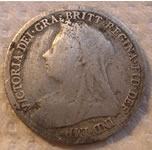 |
 |
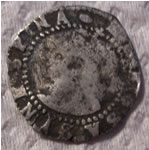 |
|
1898 Victorian
milled silver 6 pence
|
1591 Elizabeth
1st hammered silver penny
|
||
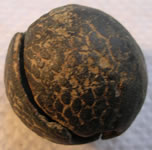 |
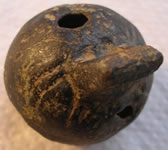 |
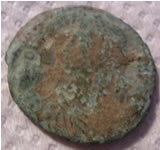 |
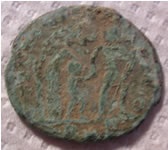 |
|
Excellent
'fishscale' decorated early crotal bell and it still rings !!
|
Mid 4thC Roman bronze 3.64g, 21.64 mm appears (and I can't be certain because the obverse legend is decidedly unclear, but from the spacing of the visible letters seems likely) to be Constantius II (337-361 A.D.) and is also a centenionalis, and also of the FEL TEMP REPARATIO series. This one shows the emperor either dragging or leading-forth a barbarian from a hut under a tree. It depends on who you read which interpretation - warlike or condescending - is cited for this type. The exergue is really obscure on this one, but I think I see an R - star - ?? which gives it a high liklihood to be mint of Rome. This type also dates to fairly early in the monetary reform of c. 348, so is about the same era, give or take a year, as the first, but could be a year or two later since Constans died in 350, but the series went on under Constantius' reign' |
||
 |
 |
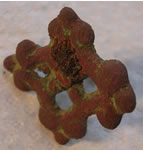 |
|
|
Lead token
with 1
|
Decorated
18thC spur
|
Post Medieval
belt mount
|
|
 |
 |
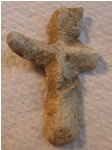 |
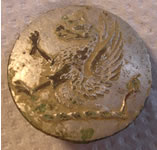 |
|
1907 Edward
VII Nigeria - British East Africa one penny
|
Medieval
lead cross
|
Griffin design
livery button
|
|
 |
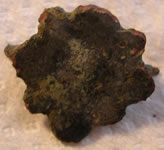 |
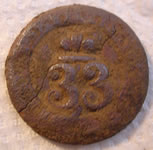 |
|
|
Huge 1stC
Roman coins in rough shape
|
Post Medieval
belt mount
|
Early 33rd
Regiment of foot button
|
|
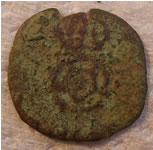 |
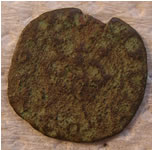 |
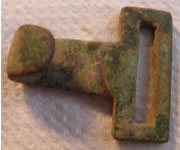 |
 |
|
1640 's Charles
1st hammered copper Rose farthing
|
Georgian
belt clasp
|
18thC chess
piece
|
|
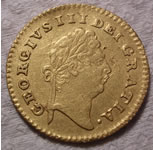 |
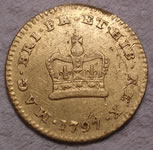 |
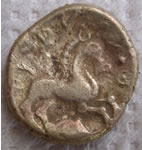 |
 |
|
George III
gold 1/3 Guinea dated 1797 found by Cal Shawn
|
45 BC Addedomaros Celtic gold full stater found by Texas Gary 5.45g, 18.78 mm CCI 05.0749 |
||
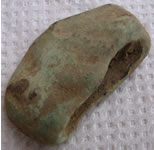 |
 |
 |
|
|
Late Bronze
age socketed axe fragment, heavily worn 25.28g, 36.02 Lx 21.39 Wx 9.83
T
|
|||
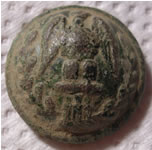 |
 |
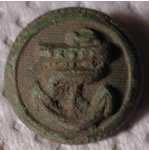 |
|
|
USA Eagle
button ?
|
'The
"celticbronze" is actually an early Roman Provincial As or Semis
from Spain - Costulo, I believe. That's probably a bull on it. This could
belong to either what's know as the "Romano-Celtiberian" series
from the time of the Republic (2nd-1st centuries B.C.) or could be as
late as Augustus/Tiberius in the 1st century A.D'.
|
Pre 1840
Navy button
|
|
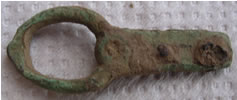 |
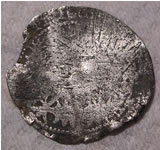 |
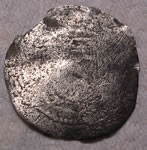 |
|
|
1250 to 1400
AD Medieval oval frame buckle with integral plate
|
James VI of Scotland 1601- 1604 hammered silver 1/4 Thistle Merk or half noble as it was sometimes known value 3 shillings and 4 pence ( 40 pence ) 1.13g,18.79mm |
||
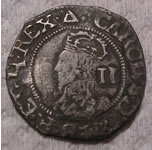 |
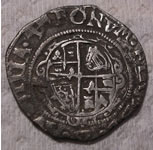 |
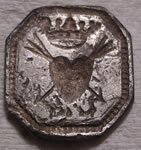 |
 |
|
Very fine
1639-40 Tower mint Charles 1st hammered silver half groat (2 pence)
0.96g, 16.19mm
|
17thC silver
mount 2.19g, 14.1 mm W x 14.85 L reported to museum as potential treasure
|
||
 |
|||
|
9thC Saxon
or Viking silver engraved strap end 5.82g, 44.44mm L x 11.91mm W reported
to museum as potential treasure found by Cal Shawn
|
|||
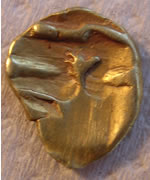 |
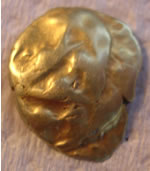 |
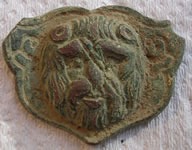 |
|
|
Morini
' boat tree' type c 70BC Celtic quarter stater 1.41g, 11.0 mm sent it
off to the Celtic Coin Register for logging found by Atlanta
Mike
|
Lion
faced mount with traces of gilding remaining - post Medieval
|
||
  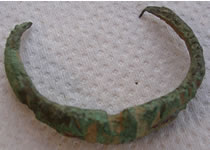 |
|||
|
Baffling
find by Cal Shawn , 10.43g, 41.91mm L x 30.41 B x 9.94mm T - What appears
to be a worn out D buckle is heavily decorated and has traces of red and
yellow enamel remaining. It is possibly early medieval but the bronze
rot suggests an earlier period but the style does not match - requires
further investigation
|
|||
 |
 |
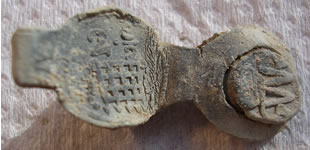 |
|
|
Lion
faced harness mount - post medieval
|
Queen
Anne 1704 Excellent lead Alnage seal with portcullis and duty paid symbol
|
||
 |
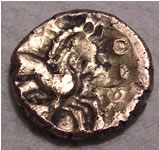 |
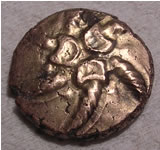 |
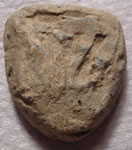 |
|
Superb detailed tiny Medieval fastener with figure kneeling and praying 1.42g,26.7mm Lx 7.62mm W |
45 BC Addedomaros
Celtic gold coin 5.58g,
15.72mm CCI
05.0752
|
Medieval
lead trade shield weight 49.87g (1.75 oz) 27.04 mm L x 25.57 mm W
|
|
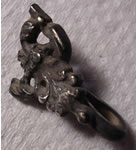 |
 |
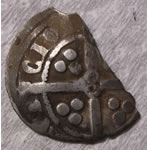 |
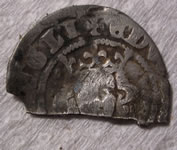 |
|
Mid 1700's
silver decorated cloak hook
|
1351 Edward III Pre- treaty, Post treaty Obv EDWARDVS REX ANGLI hammered silver penny 17.20 mm |
||
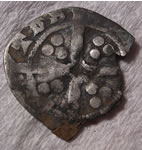 |
 |
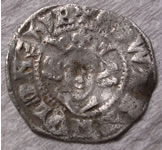 |
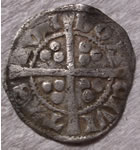 |
|
Edward 1st
hammered silver penny 1272 AD 17.10mm
|
Edward 1st 1272 Class 1d Obv EDWAR ANGL R DNS HYB Rev CIVI/ TAS/ LON/ DON Pellet on neck 1.30g,16.92mm |
||
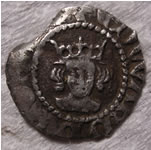 |
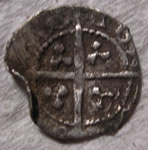 |
 |
 |
|
Treaty period
1361 -9 AD
Edward III
hammered silver farthing 0.43g, 11.86mm
|
King John
1199AD voided longcross hammered silver cut half penny 0.45g, 17.82mm
|
||
 |
 |
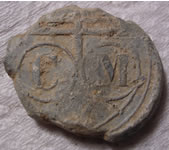 |
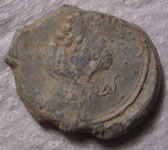 |
|
1836 William
IIII milled silver groat (four pence)
|
Lead
bale seal with traders mark CM
|
||
 |
 |
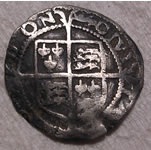 |
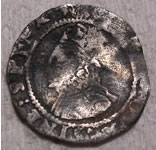 |
|
19thC working
toy cannon
|
1816
George III milled silver sixpence
|
Elizabeth
1st hammered silver penny
|
|
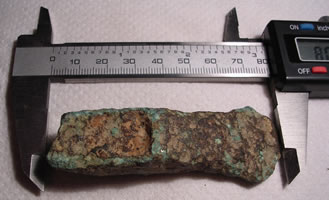 |
 |
||
|
1250
BC Bronze age socketed axe found by NH Scott. 77.38mm L x 29.45 W
|
|||
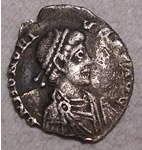 |
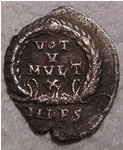 |
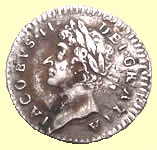 |
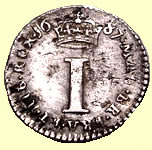 |
|
'This
is an AR Siliqua of Honorius (393-423 A.D.) minted at Mediolanum, or Milan,
as we know it today, in the first few months of his reign in 393 - when
he was 9 years old. RIC IX, 26, RSC 63.'
|
James
1st 1687 milled silver one pence
|
||
 |
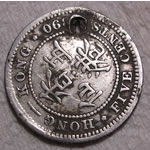 |
 |
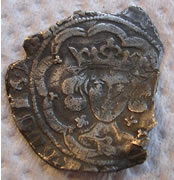 |
|
1890 Victorian
Hong Kong 5 cents milled silver
|
Edward IV
1461- 1485 hammered silver groat ( 4 pence)
|
||
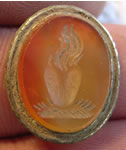 |
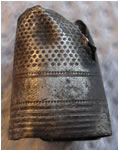 |
 |
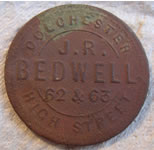 |
|
Mid 17thC
Heart and flame intaglio
|
Mid 18thC
silver thimble
|
Very
pretty button with coloured glass inlaid. Shank style suggests 16thC
|
20thC
Colchester Bedwell advertising token
|
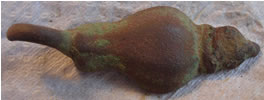 |
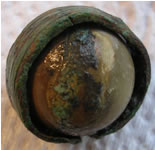 |
||
|
17thC
copper alloy hook fastener
|
Fascinating find - Stone ball griped inside a hand made decorated circular mount 7.91g, 18.90mm Early ball bearing ? Compass mount ? |
||
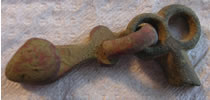 |
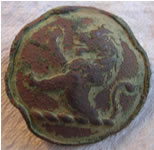 |
 |
|
|
18thC
spur end fragment
|
Lion
design livery button
|
19thC
harness decoration
|
|
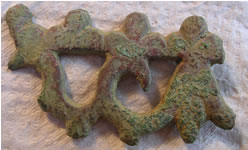 |
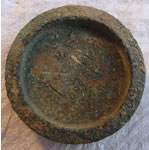 |
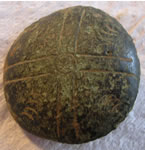 |
|
|
Huge
Medieval decorated buckle fragment ? with fleur de lis
|
1 oz
Victorian trade weight
|
Late
16th/17th C button
|
|
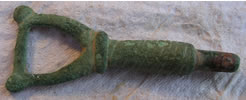 |
 |
 |
|
|
Facinating
widget - Decorated copper alloy that has a fixed end with an iron pin
- Reins guide ?
|
16thC
button
|
Lion
livery button
|
|
 |
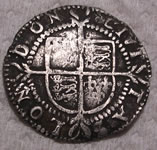 |
 |
 |
|
1590-2
Elizabeth 1st hammered silver half groat
|
1594-6
Elizabeth 1st
hammered silver penny
|
||
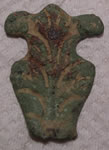 |
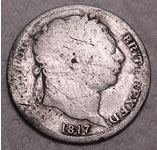 |
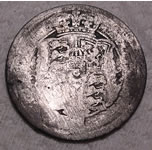 |
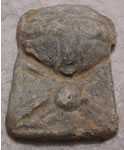 |
|
17thC sword
hanger fragment
|
1817 George
III milled silver sixpence
|
Lead item
with almost a raised crude face design - requires more research
|
|
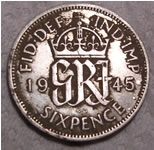 |
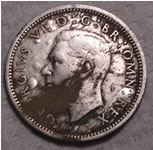 |
 |
 |
|
1945 George
VI milled silver sixpence
|
1628-9 Charles
1st hammered silver one pence
|
||
 |
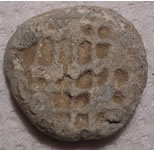 |
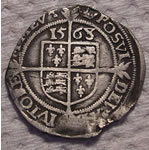 |
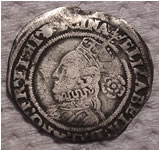 |
|
Tiny base
metal piece with crude inscription - requires more investigation
|
15th lead
token with weave design
|
1568 Elizabeth
1st hammered silver
three pence
|
|
 |
 |
 |
 |
|
Celtic Potin
coin
|
Early 1660
-2 Charles II milled silver half groat - this legend CAROLVS.II.D.G does
not appear in the Spink book ? Is this a rare test piece
|
Still digging
lots of nice 1795 pattern Artillery buttons
|
|
 |
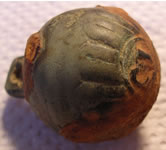 |
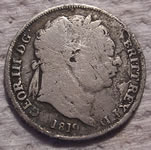 |
 |
|
Unusual type
of Georgian watch winder
|
Particularly
interesting early decorated crotal bell with a Makers mark I have not
seen before
|
1819 George
III milled silver sixpence
|
|
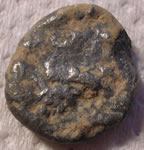 |
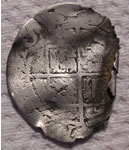 |
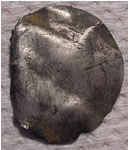 |
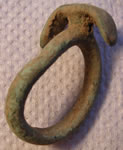 |
|
Celtic silver
coin in poor shape
|
16thC Elizabeth
1st hammered silver sixpence
|
Interesting
widget - probably to do with a harness set up
|
|
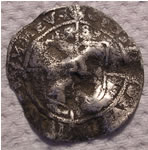 |
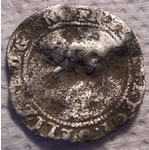 |
 |
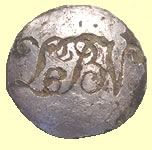 |
|
1589 Elizabeth
1st hammered silver sixpence
|
Pre 1840
Navy officers button
|
LBV monogrammed
button
|
|
 |
 |
 |
|
|
18thC Copper
Halfpenny token
|
Looks like
an early French miltary button - needs cleaning carefully
|
Livery button
with cockerel design
|
|
 |
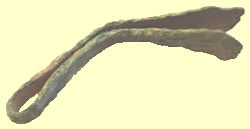 |
||
|
Romano/British
decorated tweezers 7.54g, 57.57mm L x 11.96mm w found by Canadian Andy
|
|||
 |
 |
 |
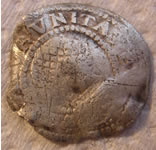 |
|
Tiny Medieval
Madonna and child figure 2.86g, 26.01mm found by NH Scott
|
Another great
find - Roman figure on a cast copper alloy strap end, probably post Medieval
7.33g, 45.30 mm found by Ottawa Greg
|
1605 James
1st hammered silver half groat (2 pence)
|
|
 |
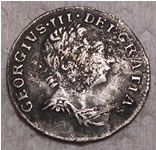 |
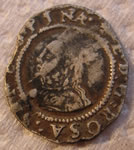 |
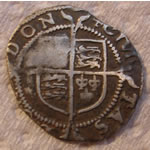 |
|
Tiny 1784
George III milled silver one pence Maundy set 0.44g, 11.44mm
|
1578-9 Elizabeth
1st hammered silver penny
|
||
 |
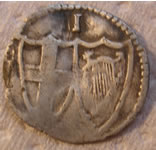 |
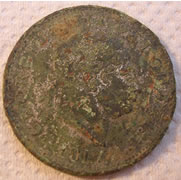 |
 |
|
1649 Commonwealth
hammered silver one pence
|
Huge 1817
George III milled silver half crown (30 pence) forgery
|
||
 |
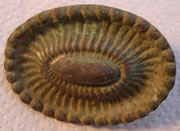 |
 |
|
|
16thC spur
buckle
|
18thC harness
decoration
|
15thC hand
punched open top thimble
|
|
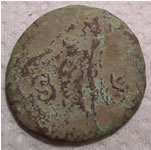 |
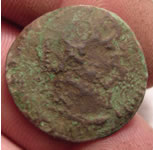 |
||
|
'Titus as Caesar, and if it is consular year 4 as I believe, would date to 75 A.D.' ID 5.45g, 22.42mm' 'I'm
afraid that all I can give you is generalities on this one. With no
helpful bits of legend showing on the obverse, and the portrait too
vague to say who is intended, about all I have to go on is your metrology
and the reverse. Great
info again supplied from Mark Lehman at the URF |
|||
 |
 |
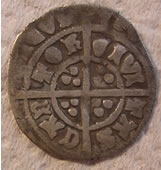 |
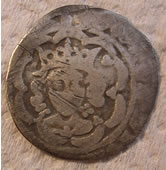 |
|
Miiltary
button
|
Post Medieval
belt mount
|
1426 Henry
VI hammered silver half groat (2 pence) Canterbury mint
|
|

